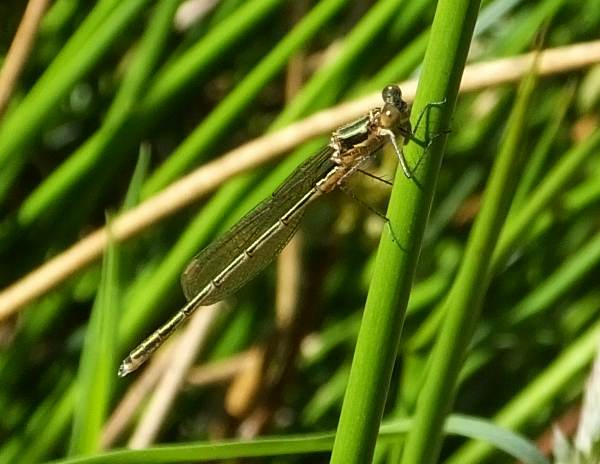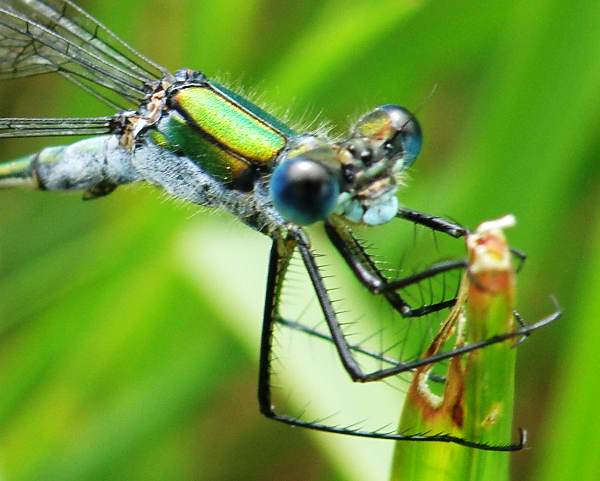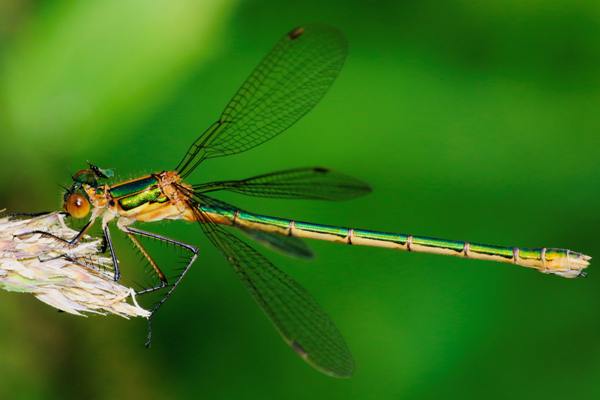Lestes sponsa - Emerald Damselfly
Phylum: Arthropoda - Class: Insecta - Order: Odonata - Family: Coenagriidae

Description
The Emerald Damselfly has a body length of some 38mm and, unlike most other damselflies, holds its wings at 45 degrees to its body when at rest. For this reason they are sometimes referred to as Spreadwings. The males are metallic green with powder-blue eyes and thorax sides; there are powder-blue bands across the first and the final two abdominal segments. Females of this species are very similar but a duller metallic green and with broader bodies with pale beige stripes on the thorax; they lack the blue colouring associated with the males. The pterostigma (wing spots), which are narrow, are dark brown in males but a paler brown in females.

Distribution
Emerald Damselflies are fairly common throughout Britain and Ireland, but their distribution tends to be localised and limited by availbility of suitable habitat. This species is found also throughout most of central Europe and parts of Asia.
Habitat
These are insects of shallow stillwaters, such as acid bog pools, small ponds, ditches and canals, that are surrounded by rushes and other tall bankside vegetation. Being weak fliers, Emerald Damselflies have to on dense vegetation for protection against the wind.

The two specimens shown above are females; the male, which has a noticeably thinner abdomen and powder-blue areas, is pictured below.

Life cycle
Emerald Dragonflies have a one-year cycle (from egg to egg-laying adult) and spend winter in the egg stage. Adults be seen in flight from late June through to late September.
Acknowledgements
This page includes pictures kindly contributed by James Wainscoat.
Excited at the prospect of flyfishing? So are we, and we're pretty sure you would find the Winding River Mystery trilogy of action-packed thrillers gripping reading too. Dead Drift, Dead Cert, and Dead End are Pat O'Reilly's latest river-and-flyfishing based novels, and now they are available in ebook format. Full details on our website here...
Buy each book for just £4.96 on Amazon...
Please Help Us: If you have found this information interesting and useful, please consider helping to keep First Nature online by making a small donation towards the web hosting and internet costs.
Any donations over and above the essential running costs will help support the conservation work of Plantlife, the Rivers Trust and charitable botanic gardens - as do author royalties and publisher proceeds from books by Pat and Sue.
